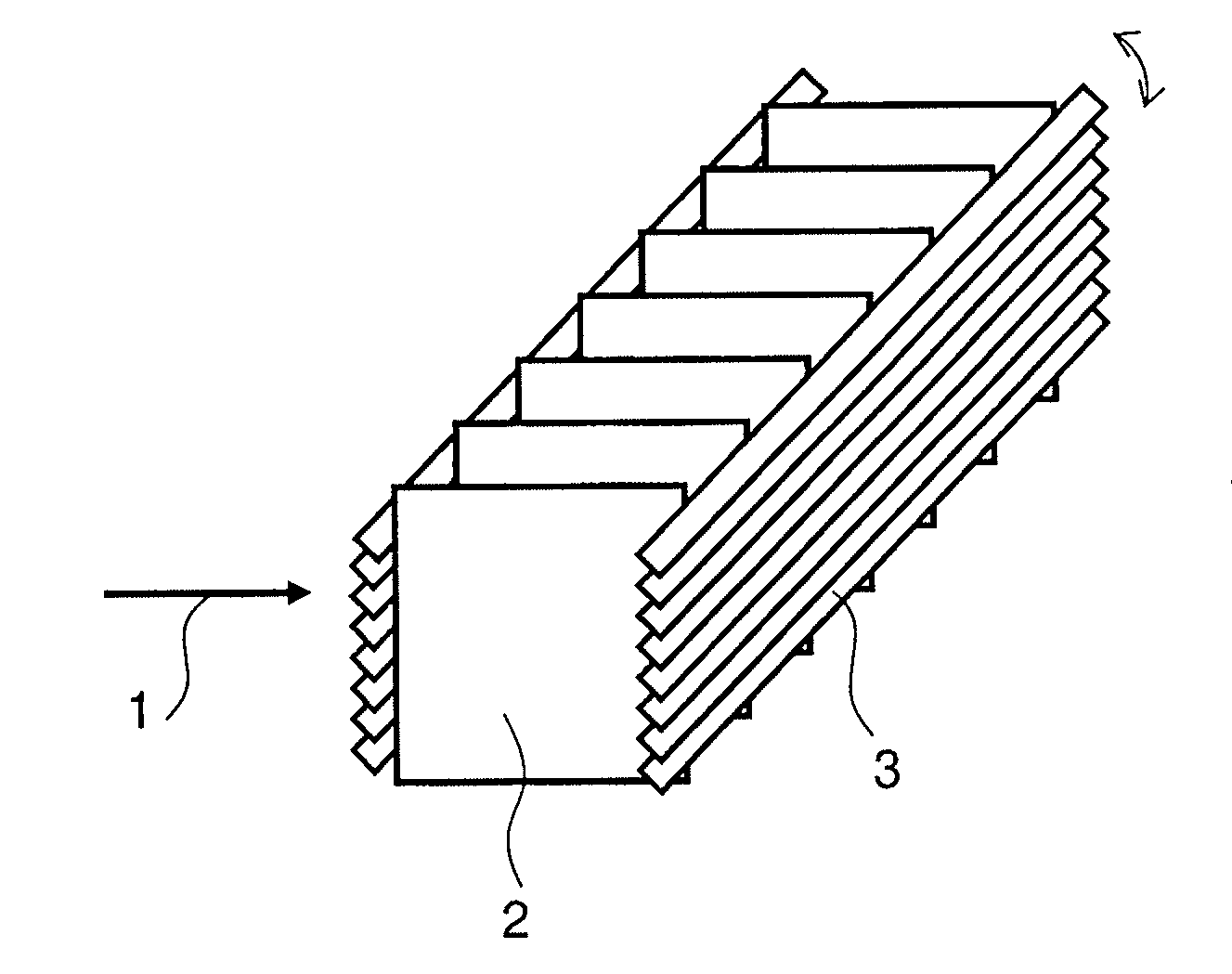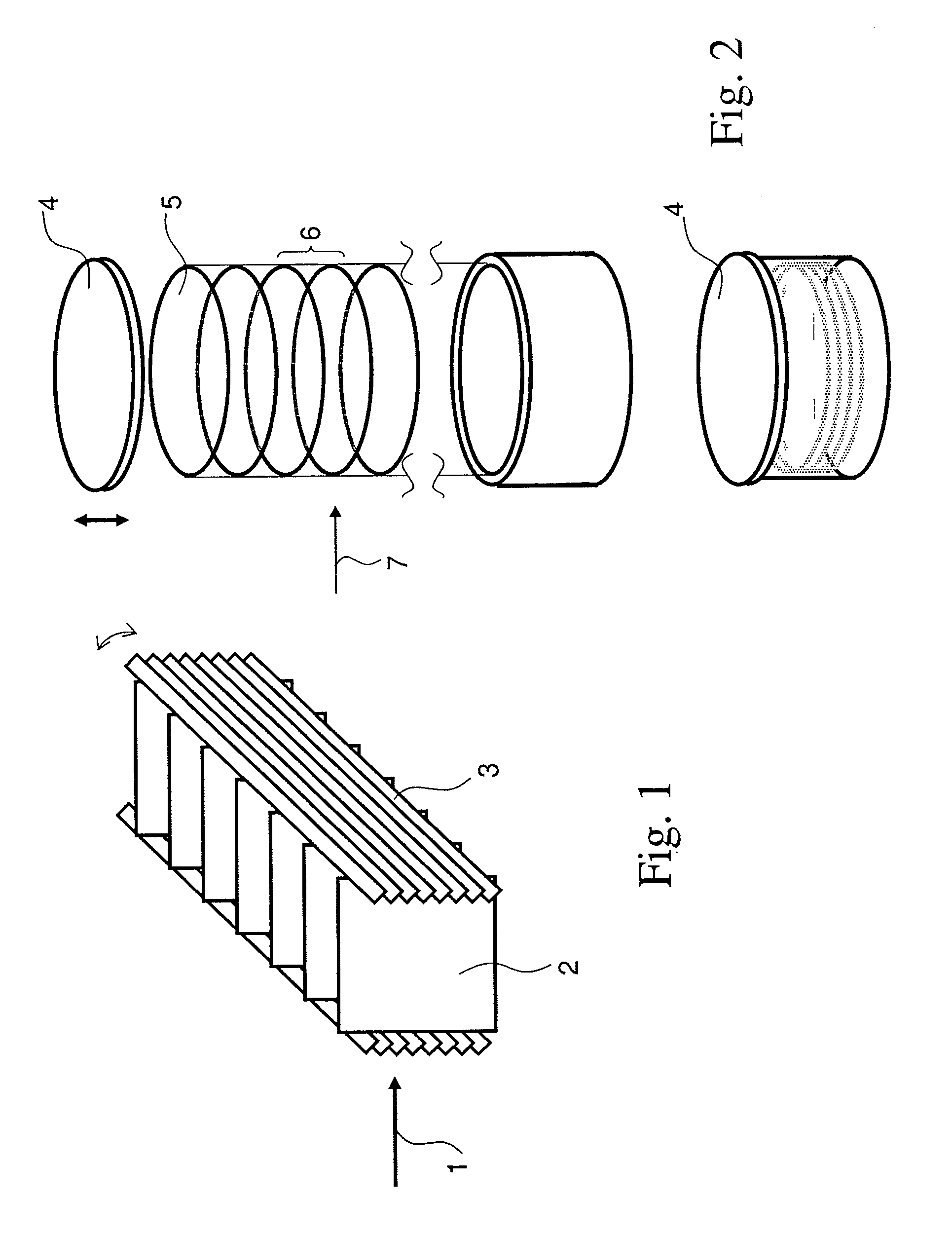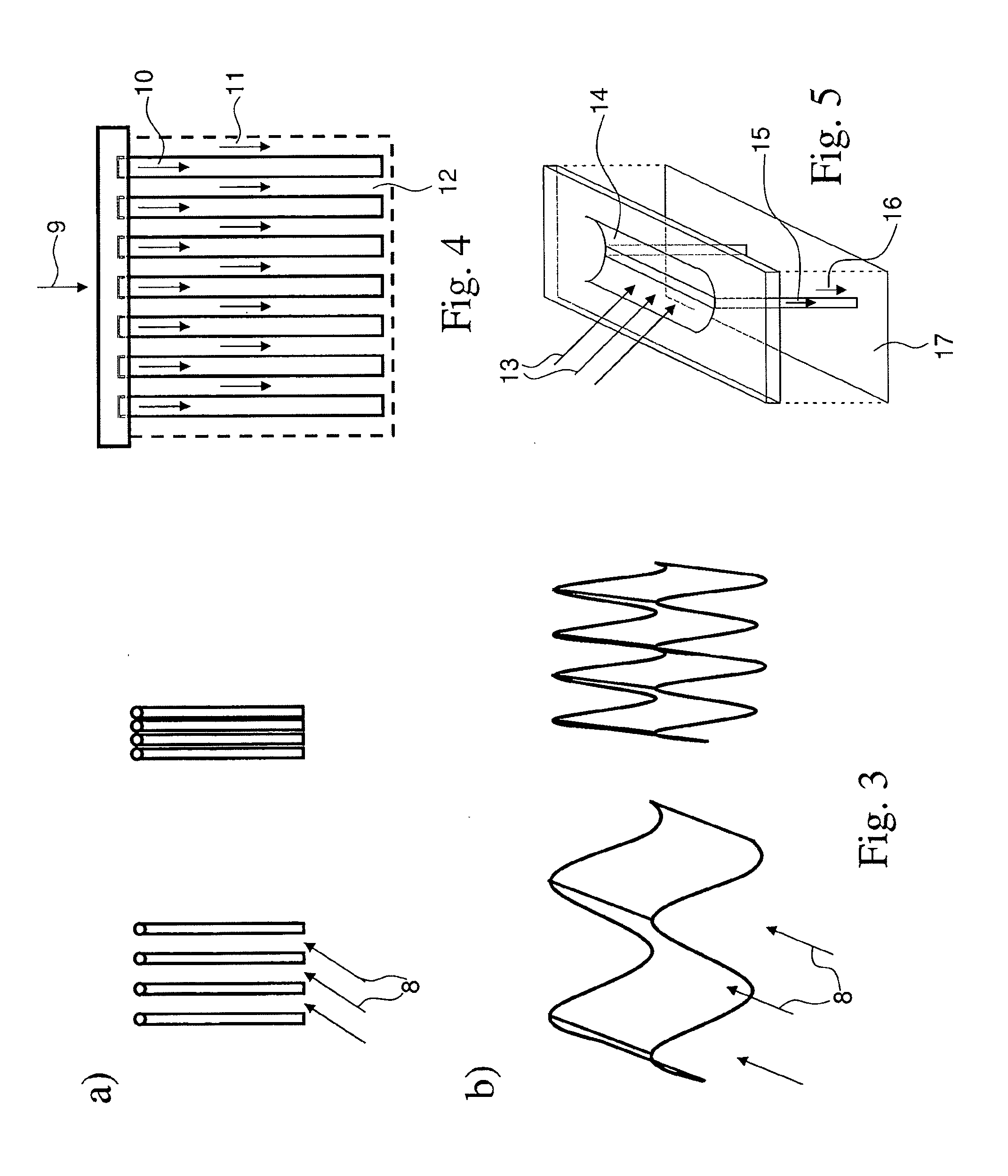Amine containing fibrous structure for adsorption of co2 from atmospheric air
- Summary
- Abstract
- Description
- Claims
- Application Information
AI Technical Summary
Benefits of technology
Problems solved by technology
Method used
Image
Examples
example 1
Preparation of Crosslinked Amine Containing Sorbent
[0123]A sorbent comprised of 47.75 wt. % carbon fiber (Mitsubishi DIALEAD®, 11 micrometer diameter), 47.75 wt. % polyethylenimine (molecular weight 25000 g / mol) and 4.5 wt. % D.E.R.™ 332 epoxy resin was prepared as follows:
[0124]5 g of polyethylenimine was dissolved in 40 g of ethanol and stirred thoroughly for 30 minutes. To this mixture 0.46 g of D.E.R.™ 332 dissolved in 3.68 g of ethanol was added under stirring. Carbon fiber was air oxidized for 3 hours at 420° C., then cooled down to 20° C. 1 g of the air oxidized carbon fiber was added to a new beaker and wetted in 8 g of ethanol. Subsequently 9.83 g of the polyethylenimine / D.E.R.™ 332 / ethanol mixture was added to the wetted carbon fiber. The resulting mixture was stirred for 30 min and then the ethanol was evaporated at 80° C. The impregnated carbon fiber was dried in an oven for 6 hours at 100° C.
example 2
Preparation of Crosslinked Amine and Hydroxyl Containing Sorbent
[0125]A sorbent comprised of 47.8 wt. % carbon fiber (Mitsubishi DIALEAD®, 11 micrometer diameter), 36.4 wt. % tetraethylenpentamine (molecular weight 189 g / mol), 11.5 wt. % glycerin and 4.3% D.E.R.™ 332 epoxy resin was prepared as follows:
[0126]1.9 g of tetraethlyenpentamine and 0.6 glycerin were dissolved in 20 g ethanol and stirred. To this mixture 0.22 g of D.E.R.™ 332 epoxy resin were added under stirring and mixed thoroughly for 30 minutes. Carbon fiber was air oxidized for 3 hours at 420° C., then cooled down to 20° C. 2.5 g of the air oxidized carbon fiber was added to the tetraethylenpentamine / glycerin / D.E.R.™ 332 / ethanol mixture and stirred for 2 hours. Subsequently the ethanol was evaporated at 80° C. and the resulting slurry was dried in an oven at 100° C. for 6 hours.
example 3
CO2 Adsorption Measurement
[0127]CO2 uptake measurements were performed in a cylindrical glass column of 20 mm inner diameter. The column was loaded with 1.5 g of sorbent. Before CO2 adsorption measurements, the sorbent was cleaned in 350 ml / min of argon flow at 120-140° C. Subsequently the sorbent was cooled down to 20° C. and synthetic air containing 500 ppm of CO2 was introduced into the column at a flow rate of 286 ml / min. Before passing through the sorbent bed, the synthetic air was bubbled through a water bath at 20° C. After the synthetic air passed the sorbent bed it was cooled down to 2° C. to condense the moisture and fed into a Siemens IR gas analyzer. The breakthrough curves of the sorbents prepared in example 1 and example 2 are shown in FIG. 6 and FIG. 7 respectively. The CO2 mass loading after the CO2 uptake measurement was 56.8 mg CO2 / g sorbent for the sample of example 1 and it was 84.1 mg CO2 / g sorbent for the sample of example 2. The sorbent prepared in example 1 w...
PUM
| Property | Measurement | Unit |
|---|---|---|
| Temperature | aaaaa | aaaaa |
| Temperature | aaaaa | aaaaa |
| Temperature | aaaaa | aaaaa |
Abstract
Description
Claims
Application Information
 Login to View More
Login to View More - R&D
- Intellectual Property
- Life Sciences
- Materials
- Tech Scout
- Unparalleled Data Quality
- Higher Quality Content
- 60% Fewer Hallucinations
Browse by: Latest US Patents, China's latest patents, Technical Efficacy Thesaurus, Application Domain, Technology Topic, Popular Technical Reports.
© 2025 PatSnap. All rights reserved.Legal|Privacy policy|Modern Slavery Act Transparency Statement|Sitemap|About US| Contact US: help@patsnap.com



